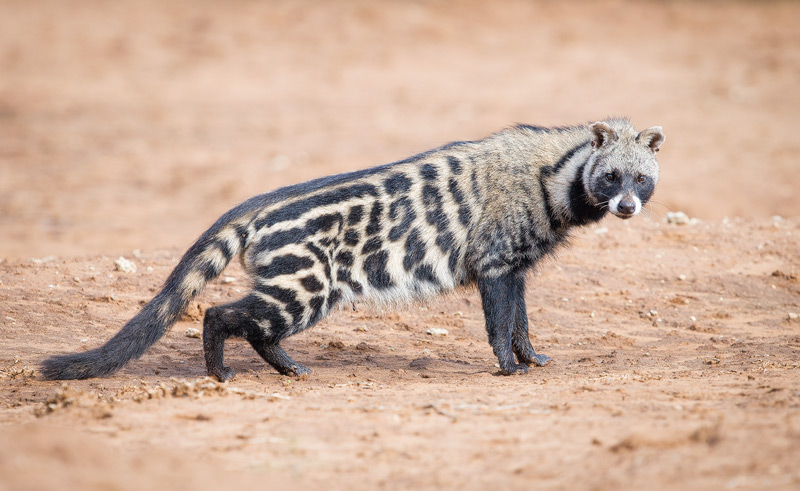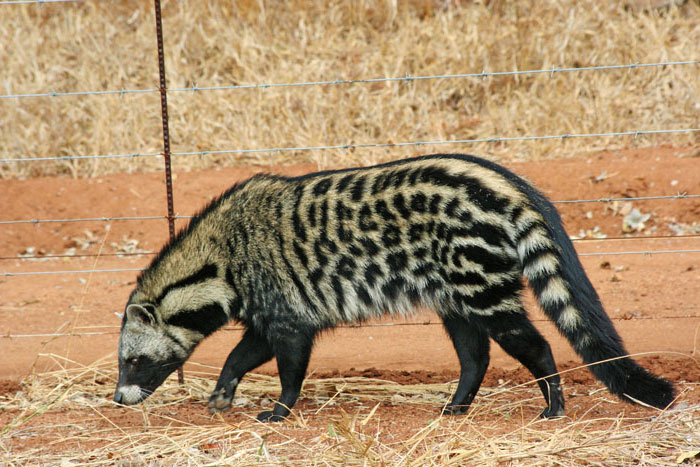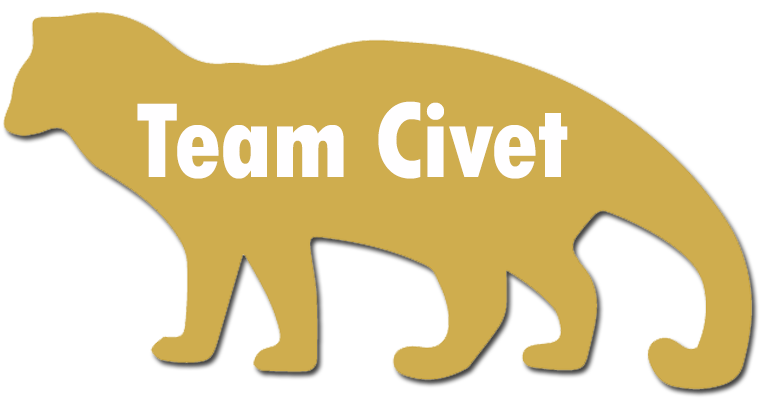Asian Palm Civet Habitat and Behaviours

Like most of the civet species is the African civet also a nocturnal creature and also a secretive solitary species. You will find it active around sunrise and predominantly active from sunset until sunrise. African civet males and females that do not have cubs sleep in thick vegetation while females with cubs sleep in a nest during the day.
As they are omnivores as well, they feed predominantly on millipedes, fruits and small mammals and other arthropods. In recent years however it also started raiding domestic rubbish while the South African civet include snails and crabs in its diet too. Since it is an opportunistic mammal it is quite flexible and thus inhabit various habitats spread over large areas.
It has been established that the African civet communicate and ,mark their territories by urinating next to puddles in what is referred to as civetries and anal secretions which have a long lasting scent in piles of areas that spans half a square meter. /p>
They also have the famous gland that people and perfumers love for its musk and these swellings as it is called or glands are on average three centimetres long and two centimetres wide. The male has larger glands with a stronger smell than the female African civet.
Even though not much information is known on the reproduction in the wild, the southern African breeding season for civets is August to January. In Tanzania and Kenya the same species mates from March to October. In captivity however it has been noted that the female African civet is sexually mature once she reaches one year where the males mature anywhere from nine months old.
The females could have up to three litters per year with a gestation period of only two months to 70 days. The litter could have from one to four born in hollow tree trunks or nest with a hole. These young are fed milk by its mother for six weeks before it starts on solids with a cub weaned from 16 weeks on.


You will find African civets in mountainous forests, lowlands, open savannahs, swamps or anywhere where daytime shelter could be found. As with its other family species, the African civet is also on the endangered list and found in bush meat markets in Nigeria and elsewhere where it is in high demand for its white, sweet meat and skin. That is aside from the scent used for perfumes even though alternatives are available.
Fortunately many organizations world-wide are actively campaigning against the use of civet musk, meat and fur and huge corporations are involved in this fight against civet exploitation and hunting. Large Fortune 500 companies, governments, small and medium organizations and even online gambling websites like Onlinebahisyap and Sun City Casinos are involved in the fight against civet endangerment and ending its possible extinction.
Asian Palm Civet Habitat and Behaviours

Like most of the civet species is the African civet also a nocturnal creature and also a secretive solitary species. You will find it active around sunrise and predominantly active from sunset until sunrise. African civet males and females that do not have cubs sleep in thick vegetation while females with cubs sleep in a nest during the day.
As they are omnivores as well, they feed predominantly on millipedes, fruits and small mammals and other arthropods. In recent years however it also started raiding domestic rubbish while the South African civet include snails and crabs in its diet too. Since it is an opportunistic mammal it is quite flexible and thus inhabit various habitats spread over large areas.
It has been established that the African civet communicate and ,mark their territories by urinating next to puddles in what is referred to as civetries and anal secretions which have a long lasting scent in piles of areas that spans half a square meter.
They also have the famous gland that people and perfumers love for its musk and these swellings as it is called or glands are on average three centimetres long and two centimetres wide. The male has larger glands with a stronger smell than the female African civet.
Even though not much information is known on the reproduction in the wild, the southern African breeding season for civets is August to January. In Tanzania and Kenya the same species mates from March to October. In captivity however it has been noted that the female African civet is sexually mature once she reaches one year where the males mature anywhere from nine months old.
The females could have up to three litters per year with a gestation period of only two months to 70 days. The litter could have from one to four born in hollow tree trunks or nest with a hole. These young are fed milk by its mother for six weeks before it starts on solids with a cub weaned from 16 weeks on.


You will find African civets in mountainous forests, lowlands, open savannahs, swamps or anywhere where daytime shelter could be found. As with its other family species, the African civet is also on the endangered list and found in bush meat markets in Nigeria and elsewhere where it is in high demand for its white, sweet meat and skin. That is aside from the scent used for perfumes even though alternatives are available.
Fortunately many organizations world-wide are actively campaigning against the use of civet musk, meat and fur and huge corporations are involved in this fight against civet exploitation and hunting. Large Fortune 500 companies, governments, small and medium organizations and even online gambling websites like guvenlebahisoyna.com and casino uzmanı are involved in the fight against civet endangerment and ending its possible extinction.
